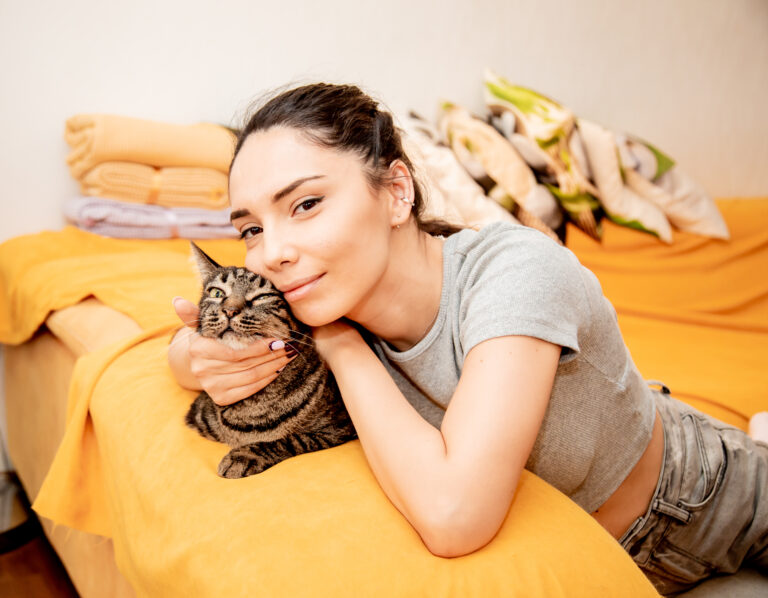What is the Difference Between Cat Insurance and Pet Insurance?
As a pet owner in the USA, it can be somewhat confusing to sift through the numerous types of insurance available for your furry friend. While cat insurance only covers a cat, pet insurance covers a far wider category of animals-Dogs, rabbits, even exotic pets. The difference between cat insurance and pet insurance go a long way in assisting you make an informed decision while getting as per the needs of your cat as well as your budget for the best option that may be used. This guide will discuss the differences, what to consider, and some benefits of cat insurance versus general pet insurance.
What is Cat Insurance?
Instead, cat insurance is a subset of the pet insurance category and specifically customizes to address the needs of cats It includes accidents such as injury, poisoning, and other animal-related incidents, as well as illnesses like respiratory conditions, diabetes, or kidney conditions, as well as routine care (optional add-ons, such as vaccinations, flea treatments, and health checks). Cat insurance is best for those who wish to focus on their feline’s health without having to pay for coverage on other pets. Pet insurance is a broader type of insurance covering a number of animal species.
Dogs
Cats
Rabbits
Birds
Exotic pets-reptiles, ferrets, or guinea pigs.
Pet insurance policies often come with customizable options to cater to the specific needs of different species. While it provides flexibility, it may not be as tailored as cat-specific plans for feline health concerns.
Key Differences Between Cat Insurance and Pet Insurance
Scope of Coverage
Cat Insurance: Exclusively covers medical needs and conditions related to cats.
Pet Insurance: Offers coverage for various animals, which can include cats, dogs, and exotic pets.
Customization
Cat Insurance: Designed with feline-specific conditions in mind, such as urinary tract issues or feline leukemia.
Pet Insurance: More general coverage, which may not always include cat-specific conditions unless explicitly stated.
Cost
Cat Insurance: Typically more affordable since it focuses solely on cats and excludes other species.
Pet Insurance: Can be pricier due to its broader scope of coverage and the inclusion of multiple animals.
Suitability
Cat Insurance: Ideal for households with cats only, ensuring targeted care and savings.
Pet Insurance: Better for multi-pet households or owners with a mix of animals.
Benefits of Cat Insurance
Feline-Specific Care:
Policies are tailored to address common feline illnesses and conditions.
Affordability:
Premiums are lower compared to broader pet insurance plans.
Simplified Claims:
Cat insurance claims are straightforward, as they deal with a single species.
Focused Add-Ons:
Optional wellness plans and preventive care are designed specifically for cats.
Benefits of General Pet Insurance
Versatility:
Covers a variety of animals, making it ideal for multi-pet households.
Comprehensive Plans:
Offers extensive options for accidents, illnesses, and preventive care across species.
Convenience:
A single policy can cover multiple pets, simplifying management.
Exotic Pet Coverage Includes non-traditional pets that may not qualify for cat-specific plans.
Cost Comparison
The cost of insurance depends on several factors, such as the age, breed, and health of your cat or other pets. Below is a general comparison:
Feature
Cat Insurance
Pet Insurance
Monthly Premiums
$15 – $30
$20 – $50
Deductibles
$100 – $500
$200 – $1,000
Reimbursement Rate
70% – 90%
70% – 90%
Coverage Limit
$5,000 – Unlimited
$5,000 – Unlimited
Cat insurance is typically less expensive due to its narrower scope, while pet insurance’s broader coverage can lead to higher premiums.
Which Should You Choose?
Cat Insurance is Best If:
You only own cats and want coverage tailored to their specific needs.
You’re looking for affordable, feline-focused plans.
Your cat is prone to common feline conditions or breed-specific issues.
Pet Insurance is Best If:
You have multiple pets of different species.
You want a single policy to manage all your animals’ healthcare needs.
You own exotic pets that require specialized coverage.
How to Select the Right Policy
Assess Your Needs:
Consider your pet’s species, age, breed, and lifestyle.
Compare Providers:
Research top USA-based insurers like Healthy Paws, Figo, and Nationwide.
Read the Fine Print:
Ensure you understand the exclusions, deductibles, and reimbursement terms.
Budget Considerations:
Balance premium costs with the level of coverage required.
Customer Reviews:
Check feedback on claim processing and customer service.
FAQs
Can I switch from cat insurance to pet insurance later?
Yes, but any pre-existing conditions diagnosed during your cat-only policy may not be covered by the new plan.
Does pet insurance cover more than one cat?
Most pet insurance policies allow multiple pets, including cats, under the same plan.
Are routine check-ups covered under cat insurance?
Routine care is typically an optional add-on, so check your policy details.
Is cat insurance worth it for indoor cats?
Yes, as indoor cats can still develop illnesses or require emergency care.
Final Thoughts
Choosing between cat insurance and pet insurance depends on your household’s needs and priorities. For cat-only households, a dedicated cat insurance plan offers affordability and tailored coverage. For multi-pet homes or those with exotic pets, general pet insurance provides flexibility and convenience.
Evaluate your budget, your cat’s health risks, and your long-term needs to make an informed decision. Regardless of your choice, investing in pet insurance ensures your furry friend receives the care they deserve without financial stress.





